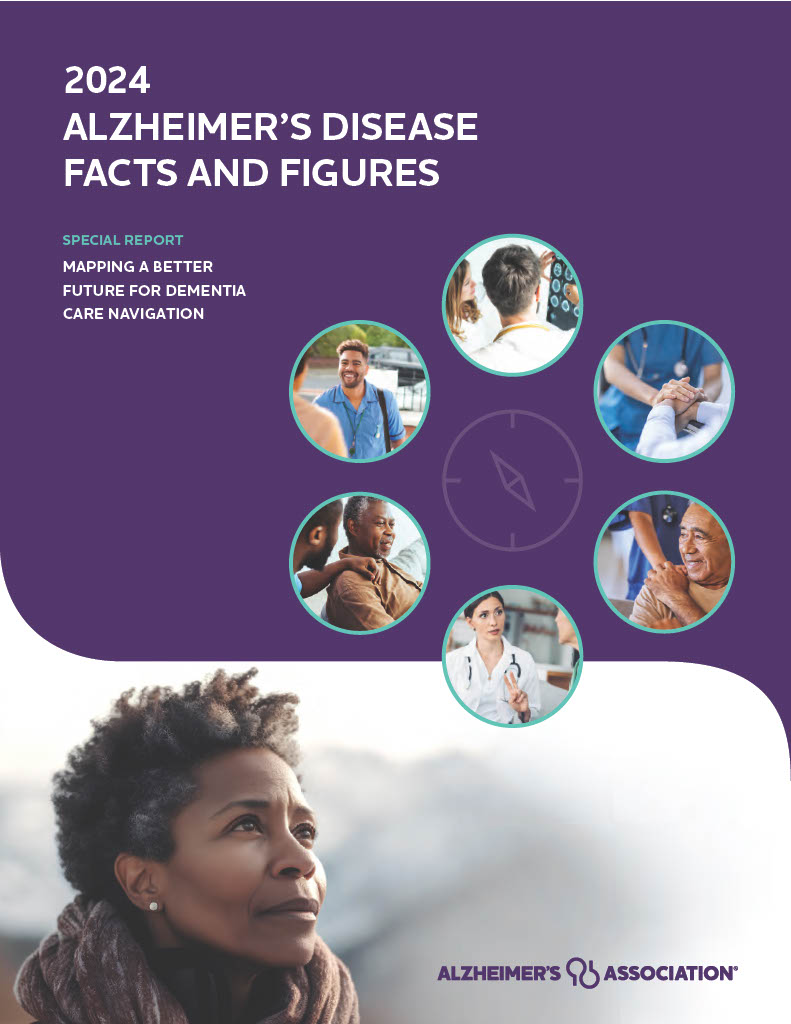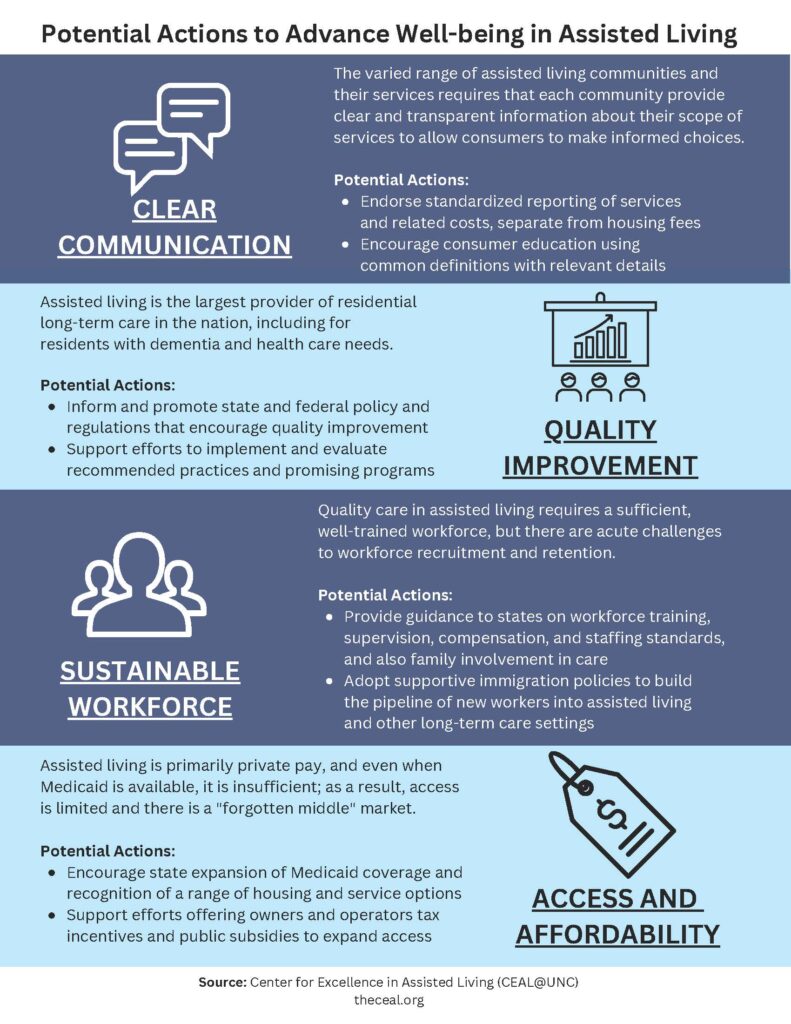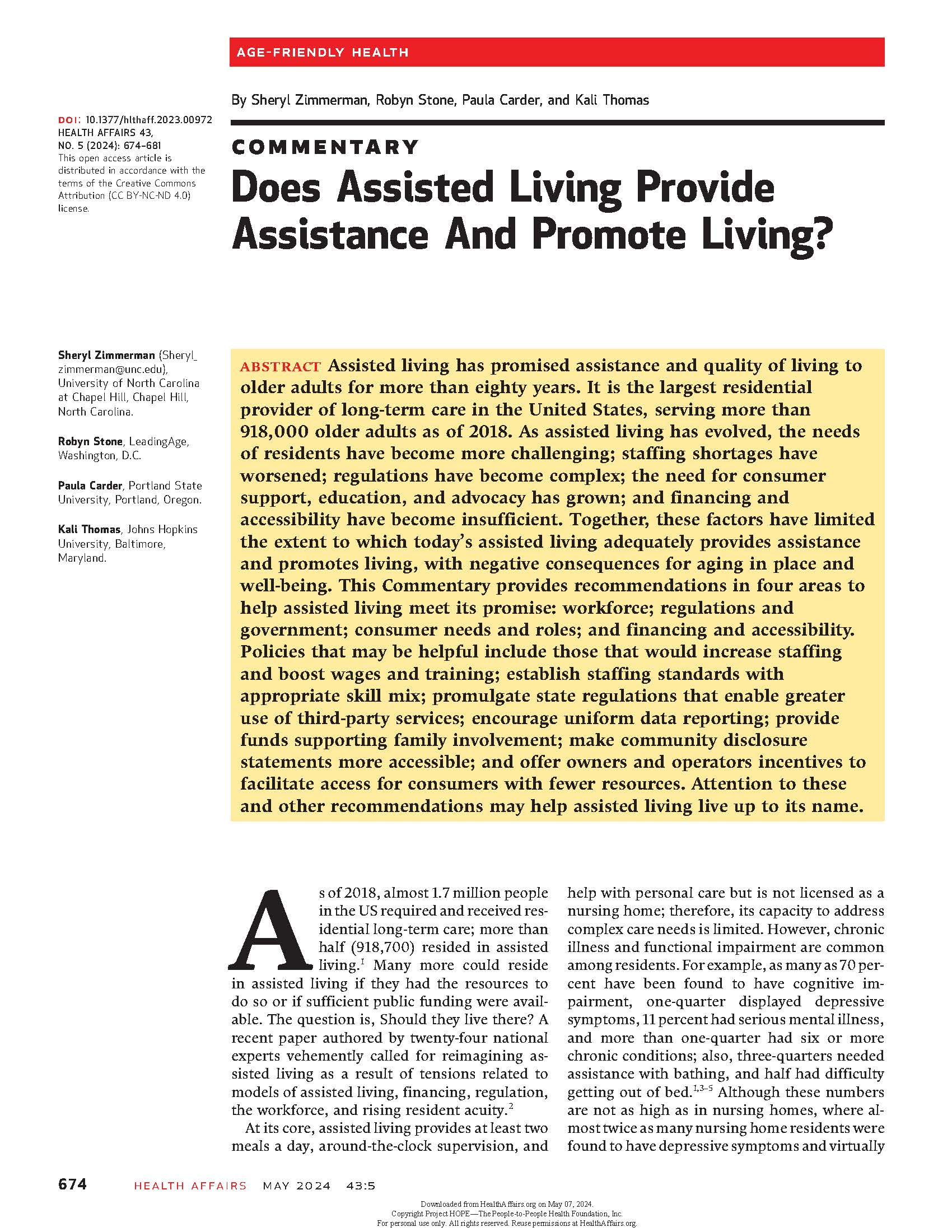Objectives The objective of this study was to assess the impact of the pandemic on the health, well-being, and access to services of paid staff and unpaid caregivers of persons living with dementia. Design Questionnaires were developed to capture the experiences of paid staff and unpaid caregivers throughout the pandemic, leveraging a pre-existing clinical trial […]
Families/Caregivers
Examining Care Network Characteristics in Older Adults’ Relocation to Residential Care Settings
Examining Care Network Characteristics in Older Adults’ Relocation to Residential Care Settings
Background and Objectives: When older adults face increasing care needs or limited support, remaining safely and comfortably at home becomes challenging. Extant research has primarily concentrated on characteristics of the older adult or their primary caregiver on nursing home admission. This study examines the risk of older adults transitioning to residential care (e.g., assisted living, […]
Family Involvement among Oregon Adult Foster Home Residents, 2018-2023
Family Involvement among Oregon Adult Foster Home Residents, 2018-2023
Objectives: To track the changes that occurred in family involvement among Oregon Adult Foster Home (AFH) residents following the COVID-19 pandemic and to examine the associations between home and resident characteristics and family involvement. Design: Retrospective analysis of repeated cross-sectional data. Setting and Participants: A total of 2027 responses from AFH providers that replied to […]
2024 Alzheimer’s Disease Facts and Figures
Alzheimer’s Association Special Report: Mapping a Better Future for Dementia Care Navigation
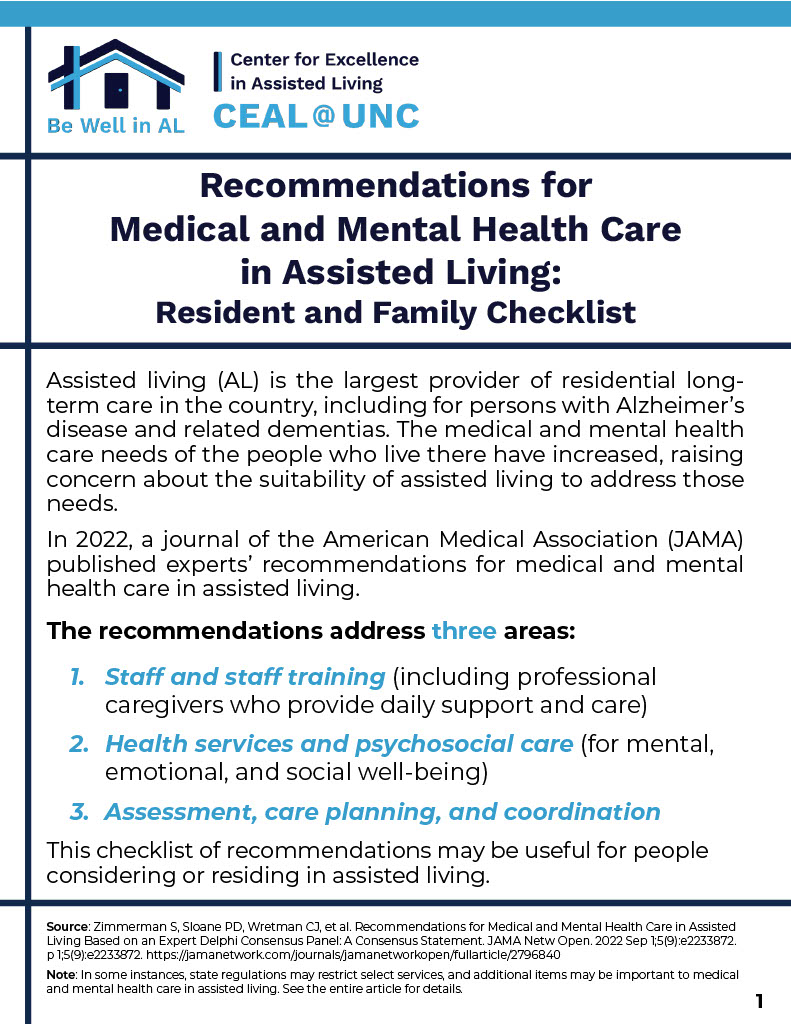
Be Well in AL Recommendations: Resident/Family Checklist
Be Well in AL Recommendations: Resident/Family Checklist
CEAL@UNC recognizes the benefit of ongoing quality improvement in assisted living, including through the implementation of consensus medical and mental health care recommendations disseminated through the Be Well in AL Initiative. This checklist, to be used by residents and their families considering or residing in assisted living, is a helpful tool to understand recommended care […]
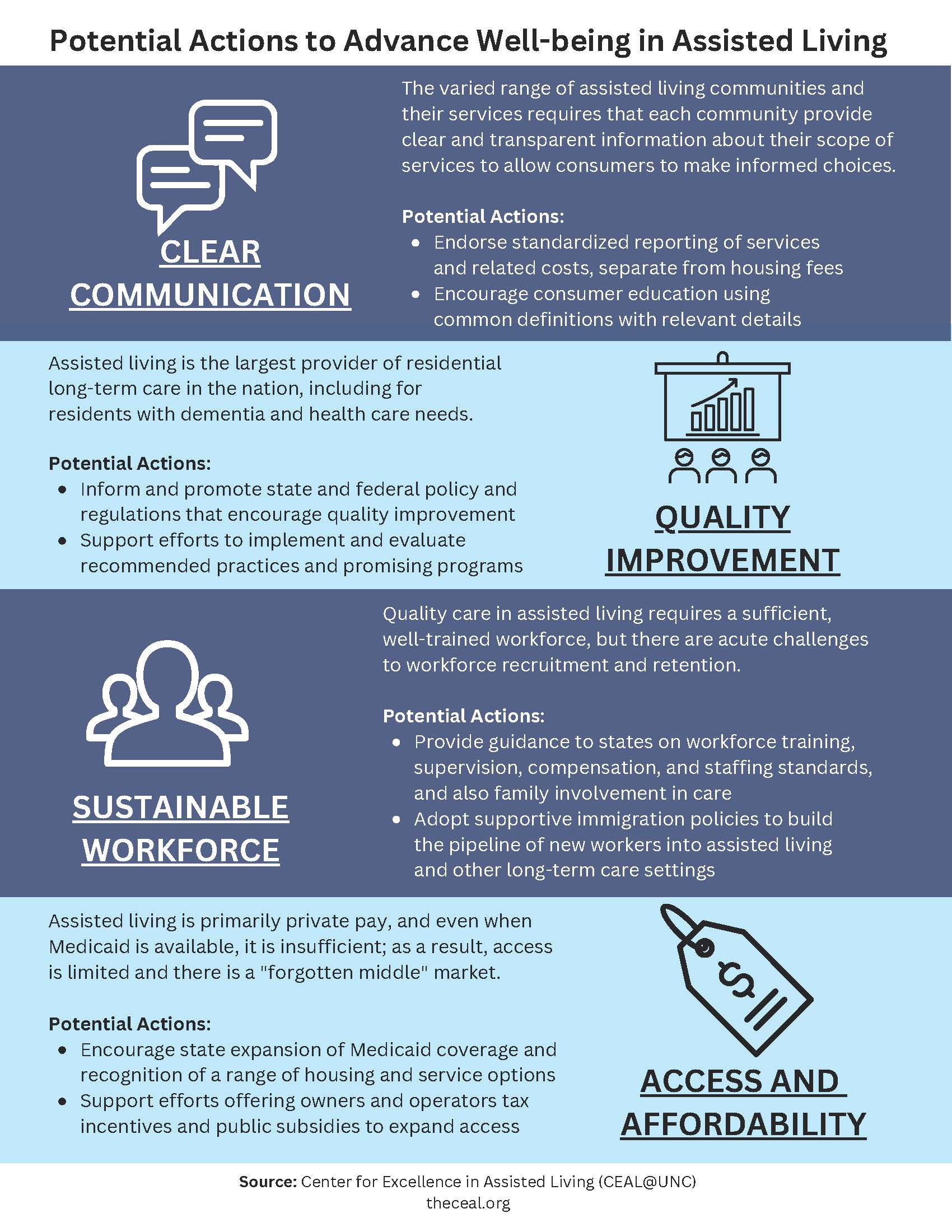
Potential Actions to Advance Well-being in Assisted Living
Potential Actions to Advance Well-being in Assisted Living
CEAL@UNC recognizes the benefit of ongoing quality improvement in assisted living. Numerous feasible solutions have been suggested that may improve care and outcomes in assisted living, including those in this information sheet. Feel free to utilize and distribute this information sheet among your networks to advance the well-being of the people who live and work […]
Resident and Caregiver Dyads Talk About Death and Dying in Assisted Living: A Typology of Communication Behaviors
Resident and Caregiver Dyads Talk About Death and Dying in Assisted Living: A Typology of Communication Behaviors
WHAT THIS MEANS FOR YOU: Interviews and fieldnotes from 15 resident-family caregiver dyads in 3 Atlanta AL communities found that conversations about death and dying were conducted in four patterns: open discussions (both partners were talking with each other about death), blocked conversations (one partner wanted to talk about death, but the other did not), avoidance due to assumptions (each partner perceived that the other did not want to talk about death), and inability to engage in conversations due to cognitive decline or strained relationships. While 60% of residents wanted to talk about end-of-life, caregivers often avoided it.
State Regulations and Assisted Living Residents’ Potentially Burdensome Transitions at the End of Life
State Regulations and Assisted Living Residents’ Potentially Burdensome Transitions at the End of Life
WHAT THIS MEANS FOR YOU: The study examined potentially burdensome end-of-life transitions (e.g., repeated hospitalizations) in relation to state regulations, using Medicare claims data for over 129,000 assisted living residents in communities with 25 or more beds between 2017-2019. There were no associations between transitions and regulations about third-party services or staffing, and small associations between transitions and medication management regulations. These inconclusive results indicate that more research is needed to understand the wide variety of end-of-life outcomes experienced by assisted living residents.
Caregiver Involvement and Concerns with Care of Residents of Assisted Living Before and During the COVID-19 Pandemic
Caregiver Involvement and Concerns with Care of Residents of Assisted Living Before and During the COVID-19 Pandemic
WHAT THIS MEANS FOR YOU: A survey about AL family caregiver experiences in Western Canada was conducted before and during waves one (Mar to Jun 2020) and two (Oct 2020 to Feb 2021) of the COVID-19 pandemic. A total of 386 family caregivers representing 110 AL communities participated. In-person visits and caregiver involvement decreased significantly during wave one of the pandemic due to visitor restrictions. Caregivers’ concerns about their relatives significantly increased during both waves, especially when they did not feel well-informed or involved in their relative’s care.
Robots in Assisted Living Facilities: Scoping Review
Robots in Assisted Living Facilities: Scoping Review
WHAT THIS MEANS FOR YOU: There is a persisting staffing shortage in long-term care, and the use of robots in AL shows promise in relieving some staffing pressures. This systematic review found benefits of using robots to improve social interaction, emotional regulation, and fall prevention; however, some studies found barriers to robot use and inconclusive results. Overall, the quality of many of the studies was questionable, and more rigorous studies are needed to understand the impact of robots on AL staff and residents.
Well-being of professional older adults’ caregivers in Alberta’s assisted living and long-term care facilities: a cross-sectional study
Well-being of professional older adults’ caregivers in Alberta’s assisted living and long-term care facilities: a cross-sectional study
WHAT THIS MEANS FOR YOU: A study in AL and other long-term care communities in Alberta assessed nurses’ and professional care aides’ physical, mental, and emotional health, behavior, stress, quality of life, turnover, and absenteeism. Mental and emotional health, quality of life, and stress related to turnover and absenteeism. Although 68% of caregivers reported being satisfied with their general health, they experienced heavy workloads and high stress. These issues may result in decreased job satisfaction, absenteeism, and higher turnover.
Coping Behaviors and Health Status during the COVID-19 Pandemic among Caregivers of Assisted Living Residents in Western Canada
Coping Behaviors and Health Status during the COVID-19 Pandemic among Caregivers of Assisted Living Residents in Western Canada
WHAT THIS MEANS FOR YOU: Surveys from 673 assisted living direct caregivers revealed that coping behaviors such as alcohol and smoking/cannabis use, and psychotropic drug use increased during the first two waves of the COVID-19 pandemic and were more common among caregivers who had anxiety or depression symptoms before the pandemic. These caregivers are thus particularly vulnerable to negative coping behaviors during stressful events and may require additional support.
Caregivers’ Concerns about Assisted Living Residents’ Mental Health during the COVID-19 Pandemic: A Cross-Sectional Survey Study
Caregivers’ Concerns about Assisted Living Residents’ Mental Health during the COVID-19 Pandemic: A Cross-Sectional Survey Study
WHAT THIS MEANS FOR YOU: Surveys with 673 caregivers from Western Canada found that concerns about residents’ depressed mood, loneliness, and anxiety doubled three months after the COVID-19 pandemic started, compared with three months before the pandemic. Factors that may alleviate concerns in the future include improving residents’ access to counseling services and better informing caregivers about resident care.
Prevalence and Correlates of Anxiety and Depression in Caregivers to Assisted Living Residents during COVID-19: A Cross-Sectional Study
Prevalence and Correlates of Anxiety and Depression in Caregivers to Assisted Living Residents during COVID-19: A Cross-Sectional Study
WHAT THIS MEANS FOR YOU: A study of 673 family and friend caregivers of residents in AL from two Canadian provinces from Oct 2020 – Mar 2021 found that 29% had clinically significant anxiety and 39% had clinically significant depression. Caregivers who faced personal stressors such as health issues, reduced income, and lack of social support, along with concerns about residents due to COVID-19, were more likely to experience anxiety and depression. Healthcare providers and assisted living staff should be aware of caregivers’ mental health challenges during public health crises and provide appropriate screening and support.
Developing a Toolkit to Improve Resident and Family Engagement in the Safety of Assisted Living: Engage – A Stakeholder-Engaged Research Protocol
Developing a Toolkit to Improve Resident and Family Engagement in the Safety of Assisted Living: Engage – A Stakeholder-Engaged Research Protocol
WHAT THIS MEANS FOR YOU: This study protocol describes the methods to be used in developing a toolkit for increased resident and family engagement in assisted living community safety planning; it includes a scoping review, qualitative interviews, and stakeholder meetings. The study’s goals include identifying, prioritizing, and evaluating existing engagement methods around safety concerns in assisted living and developing a toolkit that helps residents and families engage more frequently.
Potential Side Effects and Adverse Events of Antipsychotic Use for Residents With Dementia in Assisted Living: Implications for Prescribers, Staff, and Families
Potential Side Effects and Adverse Events of Antipsychotic Use for Residents With Dementia in Assisted Living: Implications for Prescribers, Staff, and Families
WHAT THIS MEANS FOR YOU: This study examined the use of antipsychotic medications among residents with dementia in 91 AL communities across seven states. The prevalence of potential side effects was high (93%) and of possible adverse events low, (6%), potentially associated with medication side effects. Quetiapine (Seroquel) and risperidone (Risperdal) were the most frequently prescribed antipsychotics. Most, but not all, residents’ family members were aware of their relative’s antipsychotic use.

